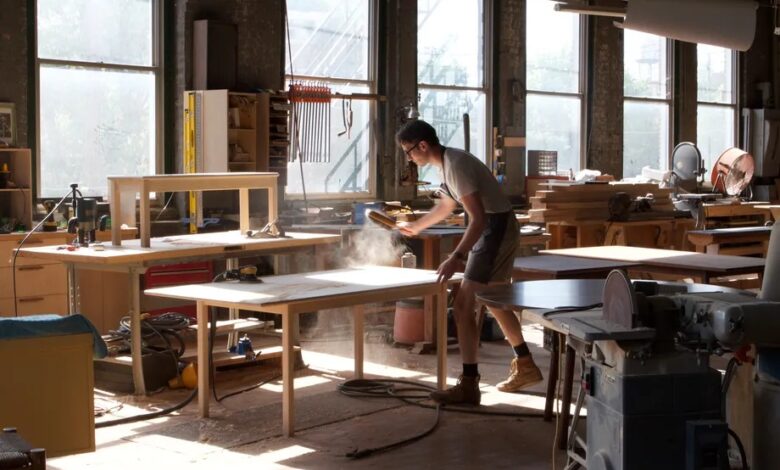Furniture Manufacturers: A Comprehensive Guide to the Industry

The furniture manufacturing industry is a vital sector that combines craftsmanship, innovation, and sustainability to create essential items for homes and businesses. As we delve into the complexities of this field, we will explore the various types of manufacturers, their production processes, and emerging trends that shape the future of furniture design.
Understanding Furniture Manufacturing
Types of Furniture Manufacturers
Furniture manufacturer can be broadly categorized into two main types: mass producers and custom makers.
- Mass Producers: These manufacturers focus on producing large quantities of standardized furniture. They benefit from economies of scale, enabling them to offer competitive prices. Brands like IKEA and Ashley Furniture exemplify this model, providing a range of products designed for the average consumer.
- Custom Makers: On the opposite end of the spectrum are custom furniture manufacturers. These artisans create bespoke pieces tailored to individual client specifications. Often, they use high-quality materials and traditional craftsmanship techniques, resulting in unique and high-value products. Companies like Thos. Moser and Baker Furniture exemplify this niche.
Materials Used in Furniture Manufacturing
The choice of materials is critical in determining the quality, durability, and aesthetic appeal of furniture. Common materials include:
- Wood: Various types of wood, such as oak, maple, and walnut, are prevalent due to their strength and natural beauty. Solid wood furniture is often seen as a long-term investment.
- Metal: Steel and aluminum are frequently used in modern designs for their durability and sleek appearance. Metal furniture is particularly popular in industrial-style homes.
- Upholstery Fabrics: Leather, microfiber, and cotton are commonly used in upholstered furniture. The choice of fabric impacts both comfort and style, making it an important consideration for manufacturers.
- Composites: Materials like plywood and MDF (medium-density fiberboard) offer flexibility and cost-effectiveness, allowing manufacturers to create intricate designs at a lower price point.
The Manufacturing Process
Understanding the manufacturing process is essential for appreciating the craftsmanship that goes into furniture production.
Design and Prototyping
The journey begins with the design phase, where designers sketch ideas and create digital models. Prototyping is an essential step, allowing manufacturers to test functionality and aesthetics before mass production.
Sourcing Materials
Once the design is finalized, manufacturers source materials. This stage often involves establishing relationships with suppliers to ensure high-quality materials that meet the sustainability standards increasingly demanded by consumers.
Production Techniques
Furniture production involves various techniques, including:
- Cutting: Precision cutting of materials is crucial for ensuring accuracy in the final product.
- Assembly: Skilled labor assembles components, often using techniques like doweling, mortise and tenon joints, or modern methods such as cam locks.
- Finishing: The finishing process enhances the furniture’s appearance and protects the materials. Techniques may include sanding, staining, and applying varnish or lacquer.
Quality Control
Quality control is an ongoing process throughout manufacturing. Inspections are conducted at various stages to ensure that each piece meets established standards. This commitment to quality is what sets reputable manufacturers apart in a competitive market.
Sustainability in Furniture Manufacturing
In recent years, sustainability has become a key focus for furniture manufacturers. Consumers are increasingly looking for eco-friendly options, prompting manufacturers to adopt more responsible practices.
Sourcing Sustainable Materials
Many manufacturers are now using sustainably sourced wood, certified by organizations like the Forest Stewardship Council (FSC). This certification ensures that the wood comes from responsibly managed forests, promoting biodiversity and protecting ecosystems.
Eco-Friendly Production Techniques
Innovative production methods aim to reduce waste and energy consumption. Techniques such as lean manufacturing help streamline processes, minimize excess material use, and lower the overall carbon footprint of production.
Recycling and Upcycling
The concept of upcycling—transforming old furniture into new, stylish pieces—has gained popularity. Manufacturers are exploring ways to repurpose materials, contributing to a circular economy that reduces landfill waste.
Emerging Trends in Furniture Design
The furniture manufacturing industry is constantly evolving, influenced by changing consumer preferences and technological advancements.
Smart Furniture
As technology continues to integrate into our daily lives, smart furniture is becoming a popular trend. This includes items with built-in charging ports, adjustable height desks, and furniture that can adapt to various functions. Manufacturers are responding to the demand for multifunctional pieces that enhance convenience and efficiency.
Minimalist Designs
Minimalism is gaining traction, with consumers favoring simple, functional designs over ornate styles. This trend emphasizes clean lines and uncluttered spaces, allowing manufacturers to create timeless pieces that appeal to a broad audience.
Customization Options
Today’s consumers desire more personalized experiences, prompting manufacturers to offer customization options. From selecting materials to choosing colors and finishes, brands that allow for tailored choices are likely to resonate more with customers.
Conclusion
The furniture manufacturing industry is a dynamic field that balances tradition and innovation. By understanding the various types of manufacturers, the intricacies of production, and the emphasis on sustainability, we can appreciate the craftsmanship that goes into each piece of furniture. As we move forward, embracing emerging trends and focusing on consumer demands will be essential for manufacturers to thrive in an ever-evolving market.





